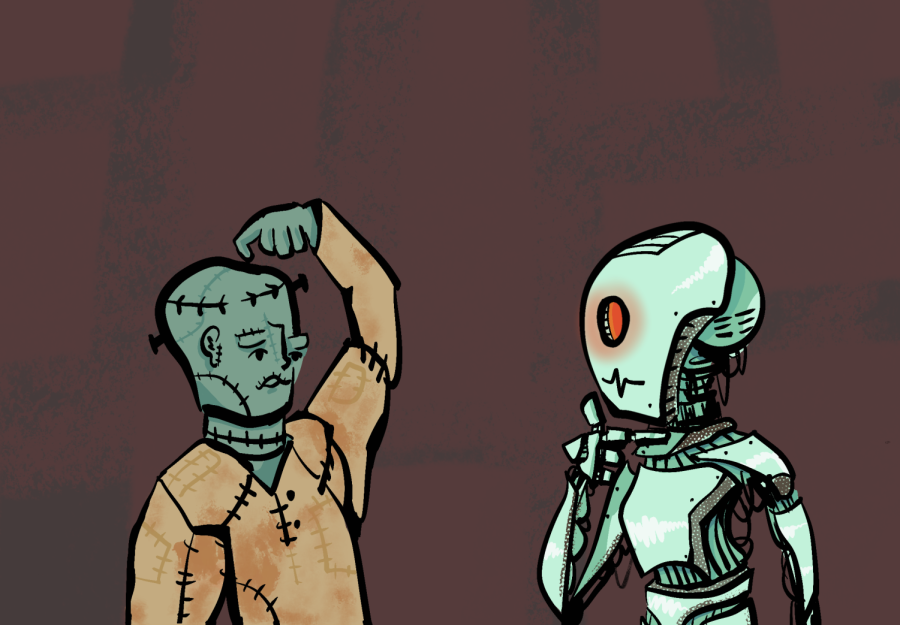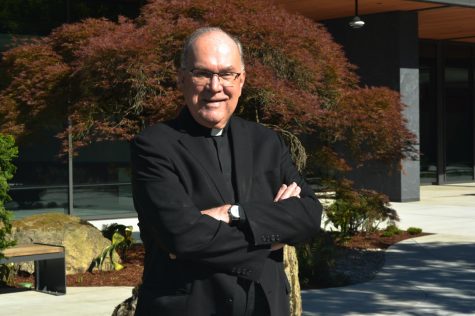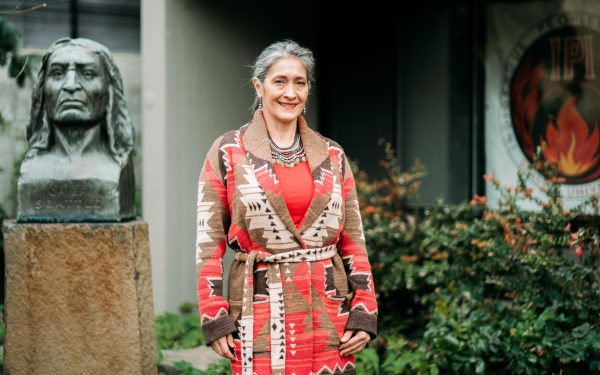Ethics and Art: AI’s New Horizon
At Tesla’s recent AI Day, the company unveiled working prototypes of their new robot, dubbed “Optimus,” which walked, waved and even danced on stage. Once the sole domain of science fiction, Artificial Intelligence (AI) and humanoid robots are now becoming reality. Despite technological advancements, some remain doubtful of Tesla’s ability to fulfill expectations and worry about the ethical implications of rapid developments in AI.
Onur Bakiner, an associate professor of political science at Seattle University, likes to stay up to date on new technological developments and their potential ramifications. The Tesla launch was no exception. However, Bakiner was quick to suggest Tesla’s audience to temper their expectations when it comes to the new robot.
“So far, there is no proof it’ll work out the way it’s intended,” Bakiner said. “It’s more proof of concept.”
Of the three robots at the AI Day, only one functioned fully autonomously, though it was built using third-party off the shelf parts. The others, while using Tesla components, required tethers or human handlers to support their weight as they moved about on stage. As noted by Bakiner, the Optimus prototypes have a ways to go in order to fulfill Tesla’s promise of a mass-produced AI robot.
Bakiner noted that Tesla is a relative latecomer to the field of AI robotics, and that while the AI navigation technology developed for their cars has crossover potential, emulating human behavior is still at a proof of concept level across the board. Tesla will have to contend with the same challenges other AI robotics designers are already facing. According to Bakiner, that effort might be better spent exploring potential uses of AI in other fields like medicine. The trope of an AI “superman” is a dead end in his opinion.
But considering Tesla’s ongoing lawsuit regarding alleged workplace racism, there are also ethical concerns at play in their entry into the AI field. Christina Friedlaender, an assistant teaching professor at Seattle U, expressed concern about tech companies determining the way technology develops without a democratic process. They point to Optimus as an example of technology reproducing the logic of white supremacy and fantasies of the wealthy.
“The notion of having robots as a kind of entity that serves replicates the beliefs that there should be people who serve us,” Friedlaender said.
Friedlaender also discussed the ways AI can replicate or even worsen societal biases. Natural language processing systems that draw on vast databases of written material tend to pick up the common use of modifiers in terms like “female” doctor and draw the conclusion that these roles are implicitly male. While there are ways of combating bias in AI, without any democratic oversight, there’s no guarantee companies like Tesla will do so.
Friedlaender noted that when AI algorithms are used in more serious contexts, these issues can have real-life implications.
“If people think these algorithms are somehow more objective or rational and free from bias, then of course, if someone tries to interrogate, ‘Actually, I think I was falsely identified,’ it becomes quite hard to do so,” Friedlaender said.
Beyond the robots and muddied waters of algorithmic ethics, a decidedly different face of AI is also emerging: art. Internet users this past year may have seen the countless AI produced images from DALLE mini based on often surreal prompts such as “kafkaesque minions,” that have now flooded platforms like TikTok. There’s a deeper side to these image-generating algorithms. According to Dawn Cerny, an adjunct professor in the Arts department, many artists are beginning to use AI as a tool in their creations.
“AI, as I understand it, is a way of generating a lot of material that then is used to evoke sensation,” Cerny said. “It’s like any kind of art production—photography, Xerox, film, poetry— it’s just the means with which we’re producing the material that we ask questions about our time.”
Cerny acknowledges that using AI in art, when not approached with depth, can come across as kitsch and meaningless. But she points to artists like Ian Cheng, who recently created an episodic anime titled Life After BOB that uses AI software to produce a unique viewing experience with each showing, as examples of AI art prompting viewers to more critically examine the role of technology in their own lives.
Undoubtedly, AI is already beginning to revolutionize the world in a multifaceted way. Based on the insights of Seattle U’s faculty however, humanoid robots may still be better suited to science fiction. Artificial intelligence has the potential to be used in a vast array of new and creative ways. Whether these tools will be used in ways which enhance human flourishing will depend upon the responsibility of those wielding them.











